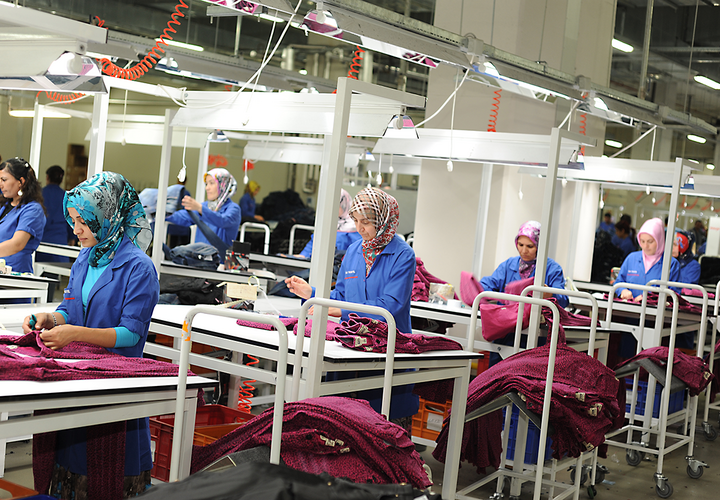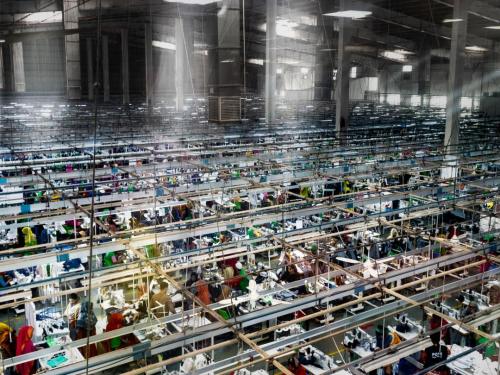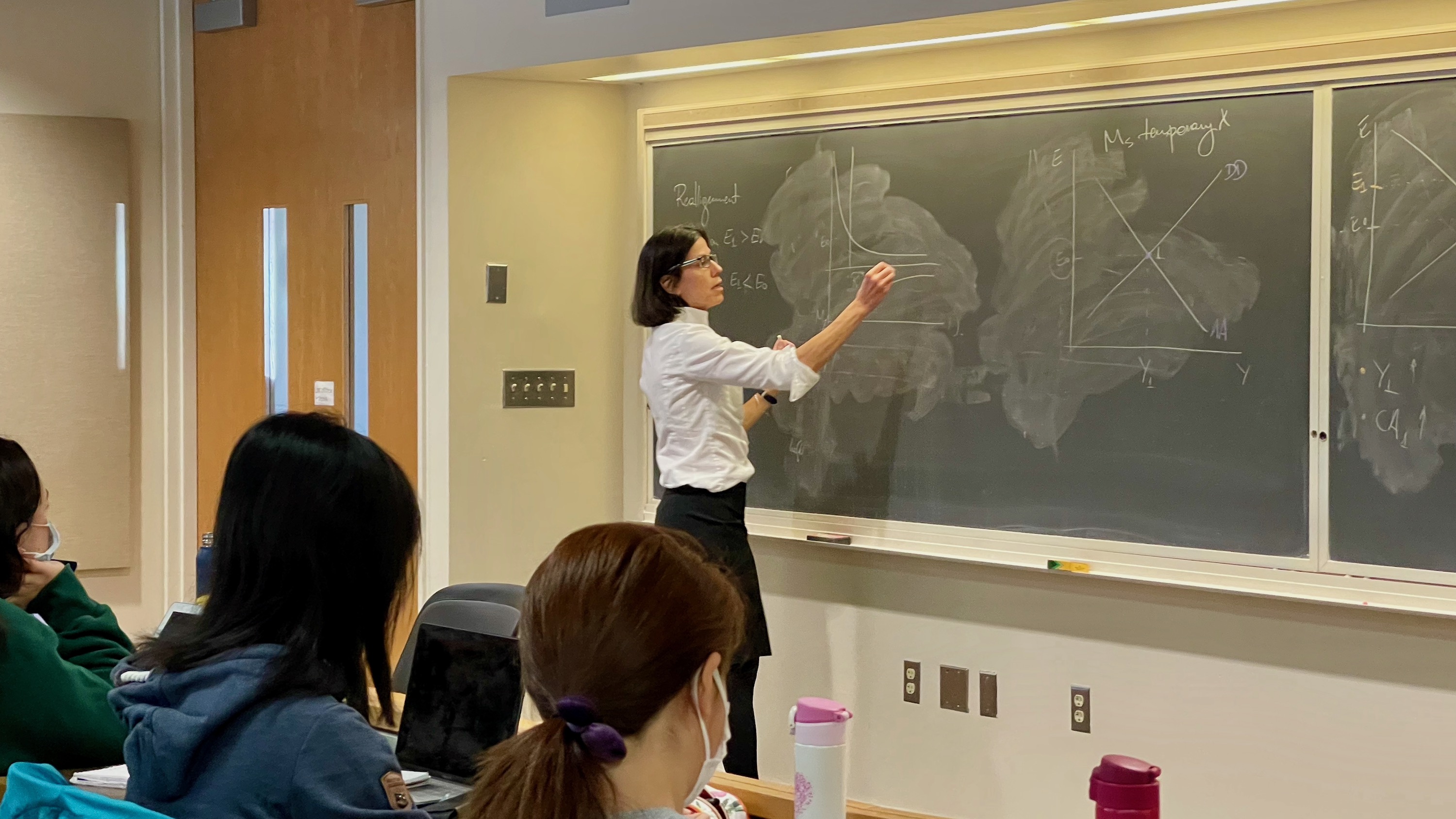Fieler & coauthors: The power of firm networks in trade and economic development

O-Ring Production Networks
Economists focused on firms in low- and middle-income countries have long studied the potential benefits of exporting to firms in high-income countries. Selling to high-income countries typically motivates firms in lower-income countries to improve the quality of their products, production processes, and management practices – such as just-in-time inventory management or flexible production processes, allowing firms to customize their products to customer demands.
In a new paper published in the Journal of Political Economy, Ana Cecília Fieler – a lecturer in Yale’s Department of Economics and an EGC affiliate – and coauthors Banu Demir, Daniel Yi Xu, and Kelly Kaily Yang study how these firm-level benefits propagate through domestic production networks.

Fieler is a Lecturer at the Yale Department of Economics, Faculty Co-Director of the International and Development Economics MA Program, and an EGC affiliate.
Combining data from Turkey with an innovative model of firm-to-firm interactions, the researchers shed new light on the network benefits of international trade, and on the government policies and economic factors that complement and amplify these effects.
In Turkish data, manufacturing firms that experience an increase in demand from high-income countries improve their performance, hire more skilled workers, and increase their trade in inputs with skill-intensive suppliers and customers.
These beneficial effects may be amplified through firm production networks. Because exporters are large and well-connected, the total effect of an export shock on increasing firm quality and demand for skilled workers across a production network may be up to ten times the direct effect on a single firm.
Governments can help trigger broad improvements in manufacturing firms by coupling export promotion policies with increases in the supply of high-skilled workers through education and training.
How networks and matching effect firm growth
A firm’s decision to adopt a technological improvement often depends on whether other firms in its production chain have also decided to upgrade. For example, automated assembly requires precisely measured parts made with automated machine tools using high-quality materials, since they operate at high speeds and break when there are irregularities. For a firm to profit from adopting an automated assembly process, its suppliers thus must offer precisely measured parts – and their suppliers’ suppliers must use high-quality materials. Similarly, improvements in the quality of a firm's management practices – such as its inventory controls, research and development, and internal communications – generally allow for a wider product scope and render the firm more flexible to respond to shocks. For a firm to profit from these types of improvements, its suppliers must also offer scope and flexibility, and its customers must value these qualities.
There is ample evidence from the literature that exporting improves a firm’s performance and its demand for skilled workers. In other words, the act of exporting often motivates firms to adopt technological or management improvements because foreign customers value them. However, the literature largely focuses on individual decisions made by individual firms, rather than considering the broader dynamics within production networks like those mentioned above
The importance of relationships in global trade
EGC affiliate Guillermo Noguera and coauthors find that forming long-term relationships with their buyers can increase profits for Bangladeshi garment exporters.

Addressing this gap, a recent paper by Fieler and co-authors argues that these network dynamics – interconnections in firms’ technological choices – helps explain why export policies in developing countries can trigger widespread improvements in manufacturing as well as increased demand for skilled workers. The researchers argue that as exporters upgrade, they prod their suppliers to also upgrade, increasing the benefits of upgrading for their customers. In this way, the impacts of an export policy can be amplified through production chains – and this amplification effect may be large, since exporting firms are typically large and well-connected.
To develop this thesis, the authors assemble a novel dataset from Turkey on firm-to-firm transactions (value-added tax data), firms’ exporting activities (customs data), and detailed employee data. While exporters represent less than 30 percent of Turkey’s manufacturing firms, they play a central role in the sector, accounting for more than 90 percent of the value of trade between Turkish manufacturing firms.
“We care about the manufacturing sector for good reason,” Fieler said in an EGC interview. “So far, there hasn’t been a single case of a country that has grown – in a sustainable way – without developing and improving its manufacturing sector.”
Quantifying the power of firm networks
Analyzing the data, the researchers find that “skill-intensive firms” – those that have adopted some technological and management improvements and thus require skilled workers – buy and sell disproportionately more inputs with other skill-intensive firms. Likewise, they find that when an exporting firm experiences a surge in demand from a high-income country (likely from higher-quality firms), the skill intensity of both the exporter and its suppliers increase – and that firm adds more skill-intensive customers to its existing connections. These facts support the building blocks of the researchers’ thesis: that higher-quality firms do indeed use more high-quality inputs, that firms are likely to upgrade when they trade with higher-quality firms abroad (from rich countries), and that this effect propagates to the firm’s domestic suppliers and customers.
Fieler and her coauthors then proceed to develop an economic model for these complex dynamics. In their model, exporting firms are large and well-connected, and firms’ decisions about technological improvements, management practices, and skill intensity are interconnected through production chains. Likewise, the model amplifies the effect of an export promotion policy on firm quality and demand for skills through a given production chain. This amplification effect is very large: up to ten times the direct effect of an individual firm deciding to export. While impressive, Fieler notes that such effects should not be surprising.
“Firms want to partner with other firms that are good at adapting to shocks,” she said. “They want to hire skilled workers that can adapt to using new technologies whenever the market requires quality upgrading.”

Fieler teaching International Finance (Econ 407).
Policies to nurture high-quality, high-skilled production networks
Fieler and her coauthors’ model is also useful in explaining why export promotion policies work in some countries and not in others. Export promotion is one of the most prominent policy tools that governments use to support international trade, and can include hosting export fairs and conferences to help domestic firms connect with international buyers from higher-income countries.
Using their model to analyze the potential effects of export promotion in various contexts, Fieler and her coauthors find that the amplification effect is muted if the supply of skilled workers into manufacturing is small. This finding is intuitive: one cannot expect firms to adopt skill-intensive technologies or managerial improvements if there are no skilled workers to implement such advances. On the other hand, the researchers find that the amplification effect is larger if a given country runs a trade surplus with high-income countries (i.e., the source of demand for high-quality goods). Likewise, they find that the amplification effect is larger if the agglomeration of skilled workers in manufacturing – as happens in large and densely populated urban areas – further improves productivity.
These theoretical predictions are in line with the experience of East Asian economies, where export promotion policies were coupled with heavy investments in education, and (more polemically) with monetary policies to decrease the value of their currency and thereby increase their trade surplus with high-income countries.
“The mix of policies adopted by East Asian countries over the last 60 years match well with the findings of our model,” said Fieler. “By making a set of strategic long-term investments, these economies have benefitted from the same network effects we document.”
No single policy can create networks of fast-growing firms on its own. But Fieler and her coauthors provide new support for an age-old lesson in development economics: there is no short-cut for growth, but the ingredients are often clear.
Research Summary by Greg Larson and Rada Pavlova. Cover photo of a textile factory in Igdir, Turkey on May 20, 2017 by Thomas Kotch, Shutterstock.